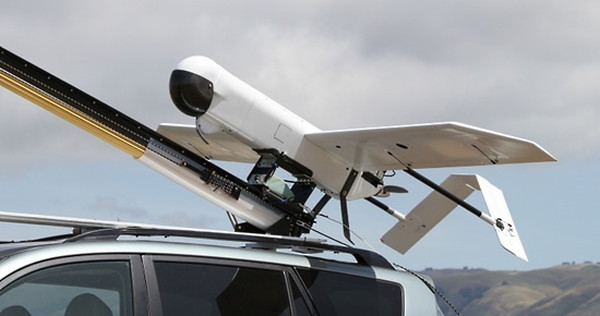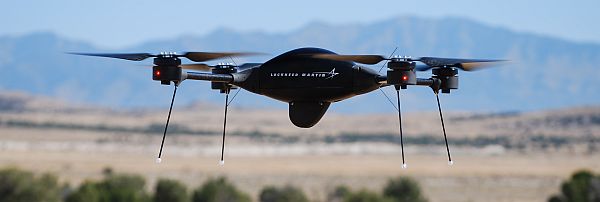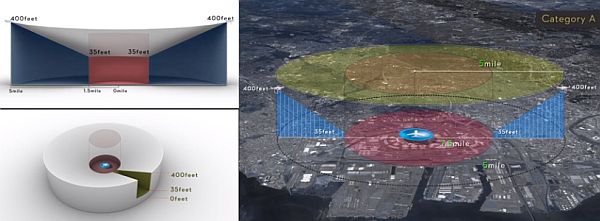Podcast: Play in new window | Download (Duration: 34:13 — 19.7MB)
 FAA grants an emergency COA, Reno is not just for manned aircraft anymore, Chinese inflatable UAVs, more UAS regulations, and more bad behavior with drones.
FAA grants an emergency COA, Reno is not just for manned aircraft anymore, Chinese inflatable UAVs, more UAS regulations, and more bad behavior with drones.
News
Drones Get Waiver to Search for Missing Texas Woman Christina Morris
The FAA granted an Emergency COA to the National Institute of Standards and Technology (NIST) of Gaithersburg, MD in order to utilize an Unmanned Aircraft System in the search for a woman missing in Texas.
Under the Emergency COA, NIST was able to operate an unmanned aircraft through contractor Texas EquuSearch, a non-profit organization that assists with locating missing individuals.
The FAA issues COAs “on an emergency basis when: 1) a situation exists in which there is distress or urgency and there is an extreme possibility of a loss of life; 2) the proponent has determined that manned flight operations cannot be conducted efficiently; and 3) the proposed UAS is operating under a current approved COA for a different purpose or location.”
Texas EquuSearch used the NIST’s catapult-launched MLB Super Bat, but did not locate the woman. The search was subsequently suspended until more leads could be developed.
Reno air races draw new kind of aircraft: drones
This year’s National Championship Air Races in Reno included the Small UAS Challenge, designed to test speed, agility, and strength. Contestants navigated an obstacle course, and participated in a time trial and a dead lift. A “Drone Zone” gave event attendees an opportunity to learn more about unmanned aerial vehicles and systems.
Tianjin expo reveals Chinese UAV innovations, aspiration and Now that’s an AIRplane! Homemade inflatable drone reaches speeds of 120mph
The Chinese are actively seeking to develop their aviation industry, and that includes unmanned vehicles. At the Tianjin International UAV and Model Aircraft Technology Exhibition, a family of UAVs were shown that featured inflatable bodies. The SF-1, SF-2 and SF-3 have wingspans of 2.5 m, 3 m and 4.3 m respectively, and a useful load of 25 kg. They can be inflated with either air, helium, or hydrogen.
This development reminds David of the experimental Goodyear Inflatoplane, produced in the 1950’s and ‘60’s.
Europe Outlines Action Plan For UAV Policymaking
Matthew Baldwin, the director of aviation and international transport affairs with the European Commission (EC) had some comments from the UAS 2014 conference held in London:
- The task of creating a regulatory framework that promotes UAS but addresses safety and privacy concerns.
- The current European framework is fragmented, and that’s a competitive disadvantage.
- Thresholds based on UAV weight are inconsistent, absurd, and arbitrary.
Baldwin said, “We believe that EASA [the European Aviation Safety Agency] is best placed to develop rules, and we envisage an EC proposal early next year to cover safety, liability and insurance, security privacy and so on.”
This Dunkable Drone Will Suck Up Whale Snot for Science
Whales have blowhorns that are lined with mucus and researchers want to collect that mucus to determine the health of the whale. Obviously, whale mucus is not easy to collect. The Olin College of Engineering has tackled this problem by developing and testing a drone they call Snot Bot. They want the FAA to give them permission to use it on real whales.
Pilot spots drone flying near Nashville airport runway
On approach to Nashville International Airport, the pilot of an American Eagle flight spotted a hovering drone. ATC notified the police air unit and the FAA is investigating.
Drones snooping into homes
Residents in this town are complaining about drones snooping around. One woman says her son had friends over for a pool party, and suddenly a drone was hovering overhead. Neighbors also report seeing a drone after dark with flashing red and green lights.
Videos of the Week
Keep an eye on battery life
Max Trescott sends in this close call where the pilot saves his DJI Phantom before it sinks into the water.
DJI Phantom and GoPro 3 Black go for a swim
Note: This video contains some profanity
In this video passed to us by Neal, a Phantom is not so lucky. But the GoPro keeps recording underwater!
Feedback
Tethered UAS
Since the FAA excludes tethered aircraft from its unmanned aircraft policy, listener Eric wondered if a tethered UAS is likewise excluded. So he asked them, “does the FAA have any guidelines in regards to tethered aircraft?” The FAA’s response:
“The short answer is no. We had looked at tethered UAS a couple years ago or so. The story is we thought they could be considered like a kite or moored balloon covered under 14 CFR Part 101. There was an internal discussion and our lawyers weighed in and deemed them aircraft, tethered or not. Tethering is merely a very good safety mitigation. Since they are aircraft, they must comply with all civil 14 CFR rules in place. That means the civil UAS must be certified by the FAA as airworthy. Currently the industry & FAA standards to make that determination are not yet fixed. This along with many other integration problems yet to be solved makes the current civil use of UAS extremely limited. Governmental uses enjoy a bit more freedom to use UAS since each governmental entity self-certifies its aircraft.”
“An operator could petition the FAA for an exemption under 14 CFR Part 11. Tethering would help in proving to the FAA the operator can meet an equivalent level of safety to the NAS [National Airspace System].”
LiPo Battery Safety Tips
Luke Harris sends along some good advice for LiPo batteries:
- When charging, never leave your battery unattended. NEVER! This is the stage where if a fault is present the battery can could possibly catch fire.
- Never charge a battery indoors. Ideally charge on the concrete outside and keep the battery in a LiPo safety bag while charging.
- Always use a balance charger and ensure you select the correct setting on your charger that matches the battery. Avoid ‘fast charging’. The most common model of charger in Australia is the ‘swallow charger’.
- Know your batteries, purchase a battery checker than can read the total capacity of the battery as well as individual cells. When you land your model, aim to have a total charge remaining of 40%. Never fly until the battery is empty, this will lead to problems when trying to charge.
- If you charge a battery it is safe to store them in your LiPo safety bag if the weather is not ideal for flying, for around one month. If you plan to store your batteries for a long period of time, discharge them to 30-40%.
- Any sign of puffing batteries, dispose of them immediately. They are not expensive to replace and not worth risking a fire. Dispose by dropping the battery into a bucket of salt water.



